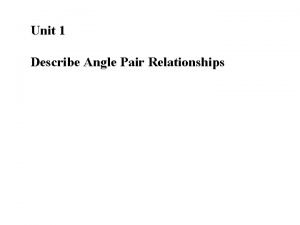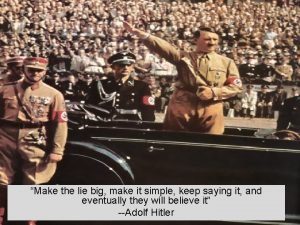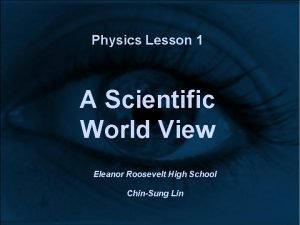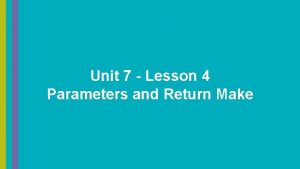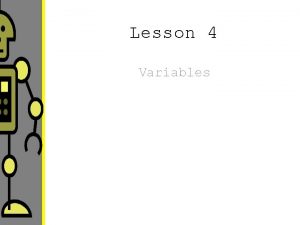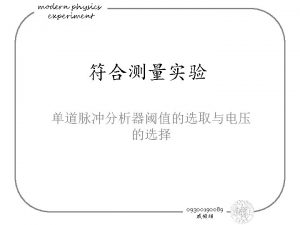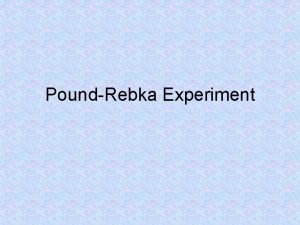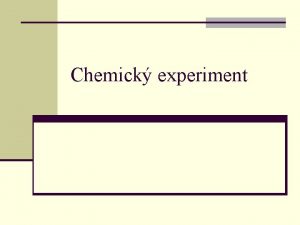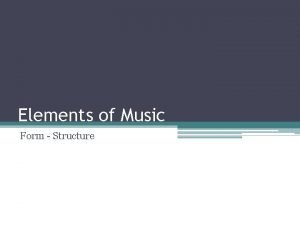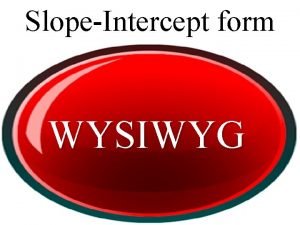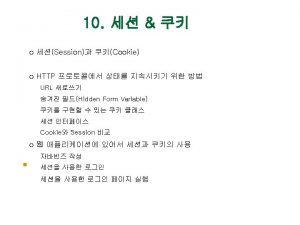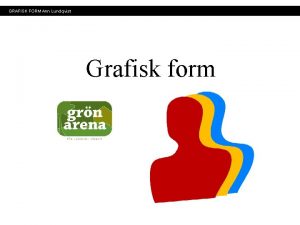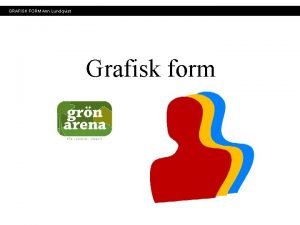PHYSICS LESSON FORM TWO Experiment To make a














- Slides: 14

PHYSICS LESSON FORM TWO Experiment: To make a magnet by electrical method i. What is conventional flow of current? - Current flows in opposite direction of negative charges

ii. What is the difference between magnetic and non magnetic materials Magnetic materials Non-magnetic materilas Attracted by magnet , eg Iron, Are not attracted by a magnet nickle e. g Glass, wood iii. What does the domain theory state? - It states that, magnetic materials are made up of domains which contains small sub-atomic dipole that are aligned in a particular direction in one domain that is different from the other.

ACTIVITY Setup the apparatus as shown. A B

Step 1 – What observations do you make on the compass needle? v. Connect the solenoid to a direct current (d. c) supply. v. Place the steel bar inside the solenoid. v. Switch on the d. c supply. v. Place a compass needle at end A v. Observe the deflection when; - The switch is open The switch is closed The current is varied The current is reversed

What do you observe?

Step 2: How does the direction of current influence polarity

Step 3: - Why does the magnetic material put in the solenoid get magnetized when current flows?

Dipoles of a magnet

Group Work Assessment 1. The number of turns of solenoid affects the strength of the magnet formed by electrical method. Explain. 2. Quiz - Magnets can be used to off load containers from ships. Explain. 3. Project. - In groups of five do the following project; § Given a copper wire, insulating material, and a cylindrical rod, make a solenoid

CONCLUSION • Relating the clock rule and Fleming’s Right Hand Grip Rule with the learner's observations. - Clock rule states that…. .


Fleming’s Right Hand Grip Rule It state that…. .

Identify the polarity of end Q Q

End of presentation
 Describe adjacent angles
Describe adjacent angles Why does it happen
Why does it happen University physics with modern physics fifteenth edition
University physics with modern physics fifteenth edition Good physics ia topics
Good physics ia topics A sales representative wishes to survey
A sales representative wishes to survey Make the lie big, make it simple
Make the lie big, make it simple Go make a difference in the world
Go make a difference in the world Make the lie big, make it simple
Make the lie big, make it simple Present continuous interrogative
Present continuous interrogative Stanford prison experiment right to withdraw
Stanford prison experiment right to withdraw Physics lesson 1
Physics lesson 1 Lesson 4: parameters and return make
Lesson 4: parameters and return make Micro lesson plan example
Micro lesson plan example Lesson 75 make it count counting by weighing
Lesson 75 make it count counting by weighing Lesson 4: variables make
Lesson 4: variables make
